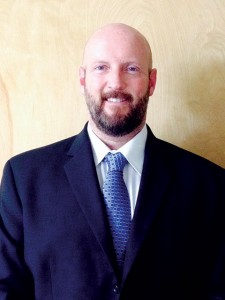Experts from Nierman Practice management discuss why some practices implement dental sleep medicine (DSM) quickly while others struggle to get going.
 Rose: We have helped thousands of practices acquire success in DSM treatment and notice some practices soar while others struggle to get going. You both work with all types of practices day in and out. What major differences have you identified between practices that go from 0 to 20 OSA patients in 6 months or less and those that take longer to get there?
Rose: We have helped thousands of practices acquire success in DSM treatment and notice some practices soar while others struggle to get going. You both work with all types of practices day in and out. What major differences have you identified between practices that go from 0 to 20 OSA patients in 6 months or less and those that take longer to get there?
 Courtney: For starters, practices that adopt a “medical model” and properly communicate that model to patients and the medical community are the most successful.
Courtney: For starters, practices that adopt a “medical model” and properly communicate that model to patients and the medical community are the most successful.
Rose: Case presentation is integral when converting to a “medical model”. Dental insurance is quoted to the penny whereas medical insurance is more of an estimated amount.
 Randy: The biggest hurdle I hear; “the patient does not want to pay thousands of dollars out of pocket”. If they only have to pay $500 to $800 out of pocket, then it’s easier to get going. If offices are only converting about 30% to 40% of patients, a true medical billing model for your dental sleep patients makes the difference. Or at least consider how to offer these services to patients who don’t move forward because of the up-front costs.
Randy: The biggest hurdle I hear; “the patient does not want to pay thousands of dollars out of pocket”. If they only have to pay $500 to $800 out of pocket, then it’s easier to get going. If offices are only converting about 30% to 40% of patients, a true medical billing model for your dental sleep patients makes the difference. Or at least consider how to offer these services to patients who don’t move forward because of the up-front costs.
Rose: This also helps when marketing to the medical community. Physicians tend to refer to dentists who can minimize their patients out of pocket cost so they can get treated.
Courtney: The benefit verification is a crucial part of the process, to ensure the rest of the process goes smoothly! Determine the patient’s deductible, co-insurance and potentially the in-network benefit (GAP). Once you have this information, you can estimate the patient’s out of pocket expense.
Randy: Yes, and the insurance carrier’s usual and customary comes into play. Three of the major insurance companies (United Healthcare, Cigna and Aetna) will usually allow an average of 75% of the charge amount if the plan is well funded. You will learn more in your area to help estimate as you see EOB’s (explanation of benefits) come back and establish a payment history.
Courtney: When outsourcing the billing, a good medical billing company should be able to coach on how to present to the patient. Randy’s the best in the business on that!
Randy: Well thanks, Courtney! The first thing I ask new clients is how they present benefits to patients. Many practices have trouble getting case acceptance and communicate patient benefits with a somewhat pessimistic tone, which inadvertently tells the patient the treatment isn’t worth the cost to them. When you haven’t met your deductible, does your doctor ask you if you still want to move forward? It’s better to say, “We have great news Mr. Brown, your medical insurance does cover this, and we expect your out-of-pocket to be X dollars. We work hard to get you GAP coverage to get you better coverage”.
Courtney: Successful practices take the time and resources to train their team and understand protocols, billing and referral processes. And, in my previous position as the medical billing coordinator for an oral appliance company, we saw practices that had a system and others who did not. Even when outsourcing the billing, I noticed that those with the system had the most success. Rose, you’re the expert on systems.
Rose: Thanks, Courtney – that is a big part of the medical model. A note “saw pt. for an appliance consult” vs. generating a SOAP report with subjective symptoms, oral/airway exam, assessment and plan can make all the difference in getting paid. And impress your referring physicians, to boot!
Stay Relevant With Dental Sleep Practice
Join our email list for CE courses and webinars, articles and more..





